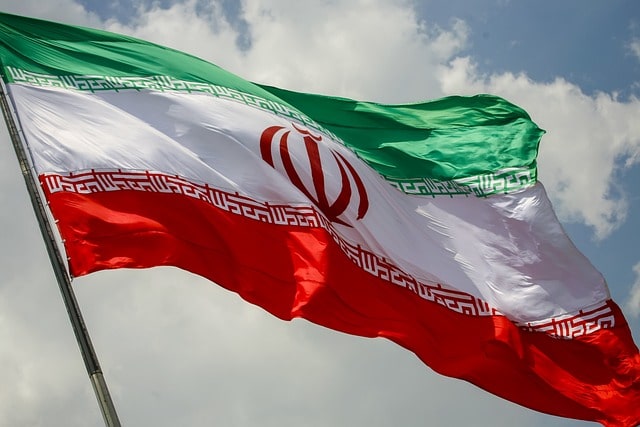Introduction to the Israel Iran Conflict
The Israel-Iran conflict, a multifaceted and deeply rooted confrontation, has been a significant source of tension in the Middle East for decades. It is not merely a dispute between two nations; rather, it embodies a complex web of religious, ideological, and geopolitical elements that have shaped the course of regional and global politics. In this exploration, we aim to unpack the historical background, examine key events and turning points, and understand the various dimensions that have contributed to the current state of affairs. This analysis will also delve into the international community’s involvement and assess the implications for regional stability, while contemplating potential resolutions and the future trajectory of this enduring conflict.
Historical Background of the Israel-Iran Conflict
The genesis of the Israel-Iran conflict can be traced back to the establishment of the State of Israel in 1948, a development that fundamentally changed the geopolitical landscape of the Middle East. Initially, Iran, under the rule of Shah Mohammad Reza Pahlavi, maintained a somewhat cordial relationship with Israel. This period saw both nations cooperating on various fronts, including economic partnerships and strategic military alliances aimed at countering common threats in the region. However, this dynamic underwent a dramatic transformation following the Iranian Revolution of 1979, which resulted in the establishment of the Islamic Republic under Ayatollah Ruhollah Khomeini. The new regime adopted a staunchly anti-Israel stance, symbolized by the severance of all diplomatic and commercial ties, and actively supported groups opposing Israel.
This shift marked the beginning of an era of hostility, characterized by indirect confrontations and proxy wars. Iran’s support for Hezbollah in Lebanon and other militant groups targeting Israel has been a significant point of contention. Conversely, Israel has expressed grave concerns over Iran’s nuclear ambitions, fearing that the development of nuclear weapons by Iran would pose an existential threat. The ensuing decades have witnessed a series of escalations, covert operations, and cyber warfare, further entrenching the animosity between the two states.
Key Events and Turning Points in the Conflict
Several pivotal events have intensified and perpetuated the Israel-Iran conflict over the years. One of the most notable incidents was the 1982 Lebanon War, where Israel invaded Lebanon in response to attacks by the Palestine Liberation Organization (PLO). This conflict indirectly facilitated the rise of Hezbollah, a Shiite militant group and political party in Lebanon, which has since become one of Iran’s principal proxy forces against Israel. The 2006 Lebanon War, another significant confrontation, saw a direct conflict between Israel and Hezbollah, underscoring Iran’s growing influence in the region and its commitment to the anti-Israel axis.
The assassination of Iranian nuclear scientists, attributed to Israeli intelligence agencies, and the Stuxnet cyberattack on Iranian nuclear facilities have also been critical flashpoints. These actions reflect Israel’s strategy of employing covert operations to hinder Iran’s nuclear program, a testament to the high stakes involved in their rivalry. Additionally, Iran’s involvement in the Syrian Civil War, supporting the Assad regime alongside Russia, has raised alarms in Israel regarding Iran’s military entrenchment close to its borders.
Geopolitical Implications of the Israel-Iran Conflict
The Israel-Iran conflict has far-reaching geopolitical implications that extend beyond their bilateral relations. It has significantly influenced the political dynamics of the Middle East, contributing to the polarization of the region into competing blocs. On one side, Iran’s strategic alliances with Syria, Hezbollah in Lebanon, and various Palestinian factions represent a formidable axis that challenges not only Israel but also the interests of Sunni Arab states and Western powers. On the other side, Israel’s efforts to counteract Iranian influence have led to covert and, more recently, overt alliances with certain Gulf states, as evidenced by the Abraham Accords.
This polarization has also impacted the broader international community. The United States, traditionally a staunch ally of Israel, has been actively involved in attempting to curtail Iran’s nuclear program and limit its regional influence. Conversely, Russia and China have sought to strengthen ties with Iran, viewing it as a counterbalance to Western dominance in the region. The conflict thus encapsulates a microcosm of larger global power struggles, with various international actors engaging in a complex web of diplomacy, economic sanctions, and military posturing.
Understanding the Religious and Ideological Factors
The religious and ideological dimensions of the Israel-Iran conflict are profound and contribute significantly to its intractability. For Iran, opposition to Israel is not merely a political stance but a fundamental principle rooted in the Islamic Republic’s ideology. Ayatollah Khomeini’s doctrine, which views Israel as a usurper state and a proxy of Western imperialism in the heart of the Islamic world, has been a cornerstone of Iran’s foreign policy. This perspective is reinforced by Shiite eschatology, which imbues the conflict with religious significance.
Conversely, for many in Israel, the conflict with Iran is perceived through the prism of survival in a hostile region. The existential threat posed by a potentially nuclear-armed Iran, coupled with its support for anti-Israel proxies, resonates deeply within Israeli society. Furthermore, the ideological underpinnings of Zionism, with its emphasis on Jewish self-determination and the historical connection to the land, clash with Iran’s vision of a Middle East devoid of a Jewish state.
International Involvement in the Conflict
International involvement in the Israel-Iran conflict is both a cause and a consequence of its persistence. The United States, European Union, Russia, and China, among others, have played pivotal roles through diplomatic initiatives, military interventions, and economic measures. The Joint Comprehensive Plan of Action (JCPOA), more commonly known as the Iran nuclear deal, exemplifies the international community’s efforts to address one of the conflict’s core issues – Iran’s nuclear program. While the agreement, reached in 2015, temporarily eased tensions, its future remains uncertain, reflecting the broader challenges of achieving lasting peace.
The deployment of military assets, imposition of economic sanctions, and provision of financial and military aid to proxies are other ways through which external powers have engaged in the conflict. These actions often exacerbate tensions, contributing to the conflict’s escalation and complicating efforts towards de-escalation and resolution. The involvement of regional organizations and non-state actors, influenced by international patrons, further muddies the waters, making a complex situation even more intricate.
Current Status of the Israel-Iran Conflict
Today, the Israel-Iran conflict stands at a precarious juncture, with both conventional and unconventional threats looming large. Iran’s advancements in missile technology and continued support for armed groups in Syria, Lebanon, and Gaza pose a direct challenge to Israeli security. Israel, on its part, remains resolute in preventing Iran from establishing a permanent military presence in Syria and from obtaining nuclear weapons. This has led to a series of Israeli airstrikes on Iranian targets in Syria, a shadow war at sea, and cyber confrontations, highlighting the multifaceted nature of the conflict.
The recent normalization of relations between Israel and several Arab states, although not directly related to the Israel-Iran conflict, has the potential to alter regional dynamics. These developments could either isolate Iran further or compel it to engage in dialogue. However, the path to de-escalation is fraught with obstacles, not least because of the deep-seated animosities and the strategic calculus of both parties.
Implications for Regional Stability
The Israel-Iran conflict is a significant destabilizing factor in the Middle East, with the potential to ignite a broader regional war. The proxy battles in Lebanon, Syria, and Gaza have already had devastating humanitarian consequences and could escalate into larger conflicts if left unchecked. The rivalry impedes not only the prospects for Israeli-Palestinian peace but also broader regional cooperation on critical issues such as water scarcity, energy, and economic development.
Moreover, the conflict serves as a focal point for sectarian tensions between Sunni and Shiite Muslims, exacerbating internal divides within countries and contributing to the spread of extremism. The international community’s divided response, with major powers supporting different sides, further complicates the picture, raising the stakes of the conflict and its potential impact on global security.
Potential Resolutions and Peace Initiatives
Achieving a lasting resolution to the Israel-Iran conflict requires addressing the root causes and the myriad factors that perpetuate it. Confidence-building measures, such as mutual recognition and respect for sovereignty, could lay the groundwork for more substantive negotiations. Regional diplomacy, involving key Middle Eastern states and supported by global powers, could facilitate dialogue and help de-escalate tensions. Additionally, a renewed commitment to the principles of the JCPOA, with modifications to address concerns from all parties, could provide a framework for managing the nuclear issue.
However, any resolution must also consider the broader regional context, including the Palestinian question, the civil wars in Syria and Yemen, and the role of external actors. It is a herculean task, requiring not only diplomatic finesse but also a genuine willingness from all parties to compromise and seek peace. International organizations, civil society, and the global community at large have roles to play in supporting these efforts, fostering an environment conducive to dialogue and reconciliation.
Conclusion: The Future of the Israel-Iran Conflict
The future of the Israel-Iran conflict is uncertain, contingent on numerous variables and the actions of both state and non-state actors. While the prospects for a comprehensive peace seem distant, incremental steps towards de-escalation and dialogue offer a glimmer of hope. The resolution of this conflict is not only vital for the security and stability of the Middle East but also for global peace. As the international community contemplates the path forward, the lessons of history and the imperatives of the present must guide its efforts towards fostering a future where conflict gives way to cooperation, and enmity to understanding.

